A Very Different A3!
⬅ previous ⬆intro next ➡Day 3 - Sunday 3 September
Today we are cycling to Peel, to see the harbour and castle. It will mostly be along the A4, which no more resembles its English counterpart than the A3 does. However, when Amanda went for a morning run, she'd noticed a sign for a cycle path just north of Kirk Michael, the nearest village. We don't know whether it'll be any use, but we're going to check it out.

This doesn't seem a promising start!
In fairness, though, it's a former train line and the track ran through a cutting here. The steps lead down from the road bridge over it.

At the bottom of the steps, it's all a bit more reasonable.
Of course, being in a cutting means there's not much to see, but then it's not far till we're back in Kirk Michael anyway.
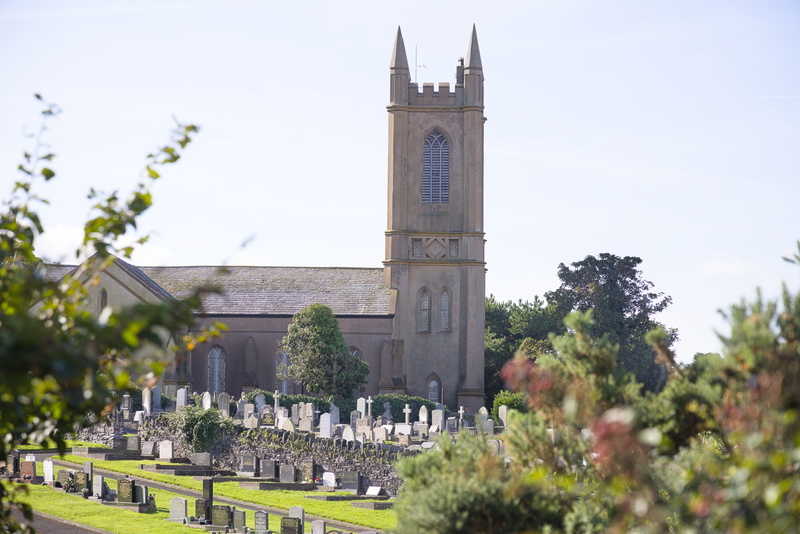
Seems to be quite a grand church.
The village is pretty much the end of the line though. The nonexistent viaduct we didn't see on our first day is a bit of an impediment. Later we will find that there had been plans to replace this and another bridge and extend the cycle route all the way to Peel, but nothing has happened. Whether the scheme was sunk by Covid or something else isn't clear, but there's definitely no visible sign of it coming back to life.
So off down the A4 it is, and while it's a pleasant enough ride, there isn't really anything noteworthy on the road until we start getting near to Peel.

Our first sight of the castle and harbour as we approach the edge of town. The castle site was originally an island, but it's now been solidly linked up with a causeway.
When we arrive, although there's quite a big car park for visitors, we can't seem to find a bike park anywhere. We continue past the castle to the pier and still none. We will have to improvise it would appear. Fine, we can tie our bikes up to some railings at the side of the road. Just need to be careful not to drop anything the other side, because that's the sea.
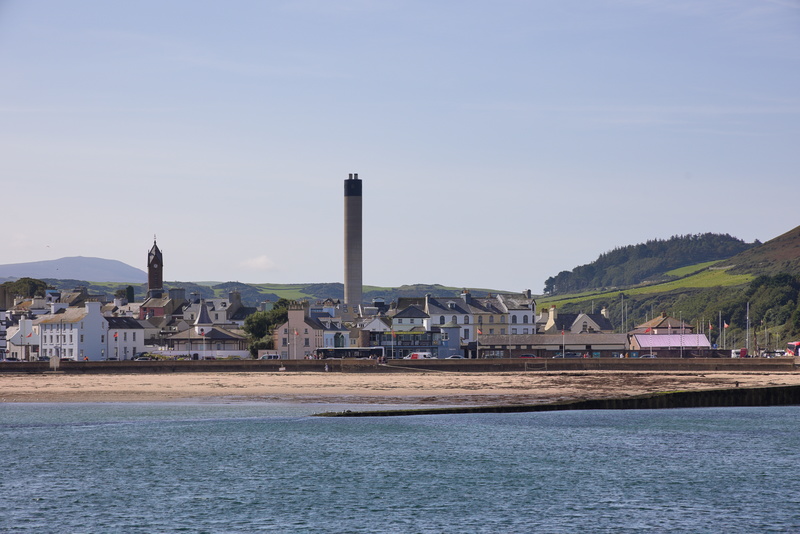
Looking back from the pier to the beach and town. The church spire stands well above the houses but it's dwarfed by the chimney of the power station.
The power station now only operates as a backup when other capacity is not available, such as during maintenance periods. It burns oll which makes it uneconomical to run as a primary generator. Manx Utilities' website says very little about it, but more information can be found in a newspaper article in Isle of Man Today.
Incidentally, searching for "peel power station" is a bit confusing because of the company named Peel NRE (where NRE stands for "Natural Resources and Energy) which is nothing to do with this place.
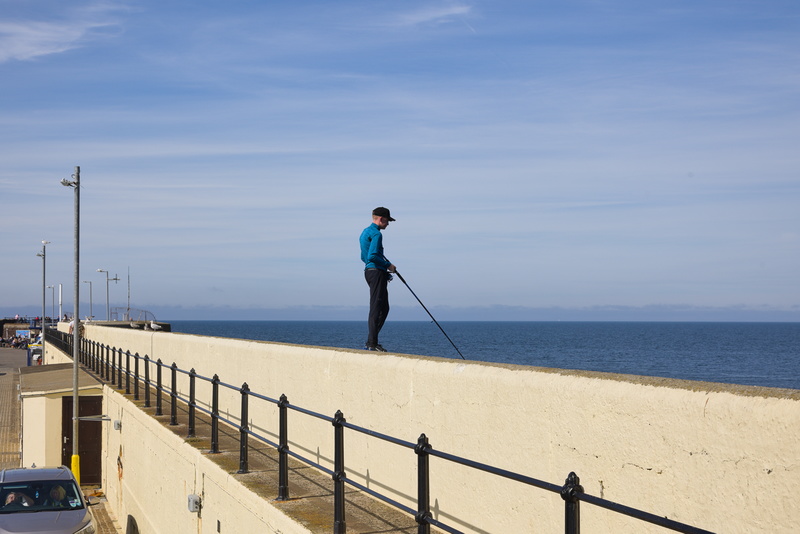
Fishing off the wall seems popular. There are several others out of shot including one who gives every impression of having needed a crane to winch him into position.
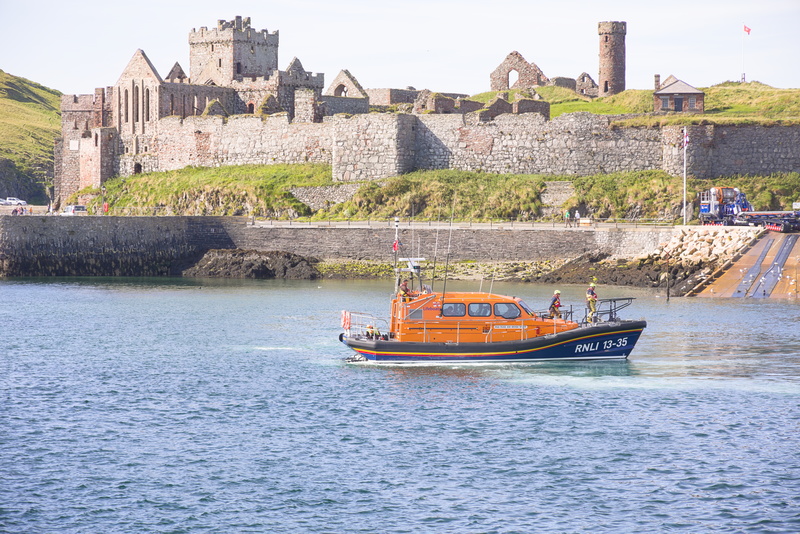
We think the RNLI are having some kind of training operation. They're certainly not rushing to rescue someone, but their exact mission remains unclear.

And so, into the castle itself.
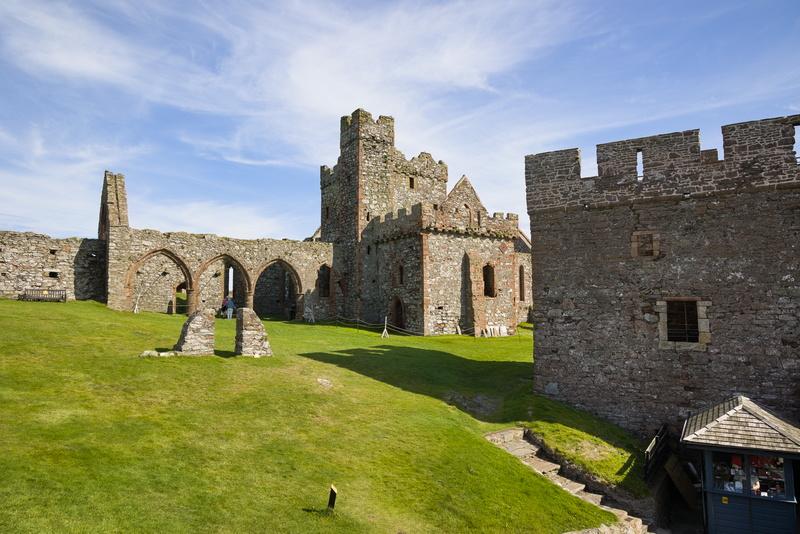
Inside it's not a single building but a complex, mostly now ruined.
The church of St German, here, was built in the 12th century

This tower is believed to be the oldest structure still extant on the island, dating back to the late 10th century. It would have been built as a lookout and refuge for monks against Viking raiders, and while they are common in Ireland, this and another in Scotland are the only such towers in the British Isles. The top part is a mediaeval alteration: originally the tower would have been taller and had a conical roof.
Fascinating fact: the tower features in the design of an Isle of Man £2 coin, which UK coin dealers will currently sell you for a range of prices from £7 to £50. It's not immediately obvious what causes the variations because it's not just year and quality, different dealers seem to take different general views of the coin's value. Given that it's all easily searchable online, you'd expect them to be pretty much of a muchness. Maybe there are numismatic subtleties opaque to the uninitiated here.

A lot of the buildings are made from soft local sandstone which doesn't really withstand the forces of erosion well over centuries.

We're looking down over the entrance passage at another cyclist who's obviously not found the bike park either. But whether he decides entrance is too expensive, or they tell him that bikes can't be brought in, or whatever, 30 seconds later he's leaving again.
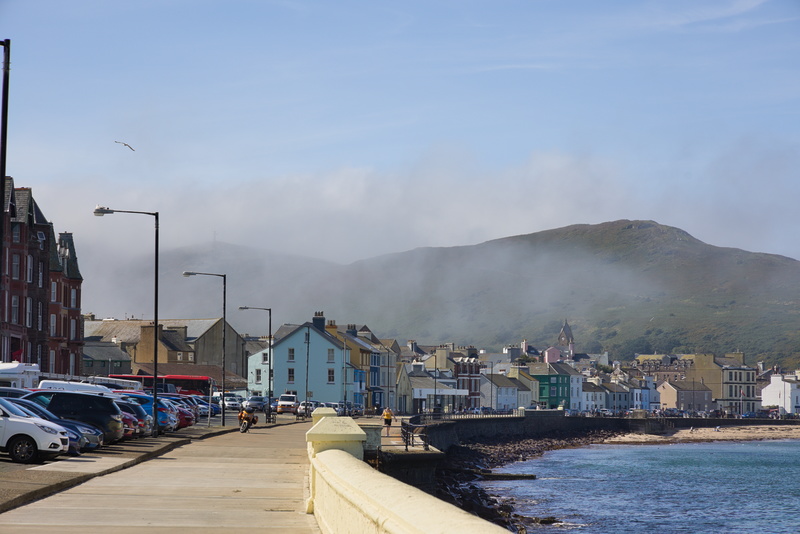
We are surprised to see these clouds at ground level on what is basically a sunny day. At first we wonder if it's smoke or something instead.

A pedestrian swing bridge opens to allow boats in and out of the marina. It's a fair old trek to get to the permanent bridge further inland, so most people will simply wait to cross.

Quite a crowd has built up by the time it's open to foot traffic again.

A gaggle of yachts take to the high seas. They seem to spend quite a while going round in circles not far offshore before departing for wherever they're going. We have no idea what the preliminary manouevering was all about.
So to the House of Manannan, a museum of Manx life and history.
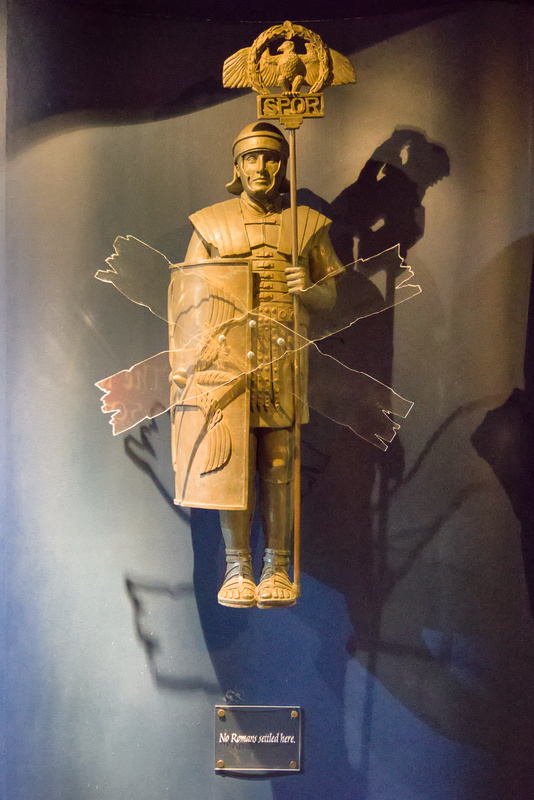
It's an anti-exhibit really: "No Romans Settled Here".

This looks very dodgy!

This is "Odin's Raven", a modern replica (2/3 scale) of a Viking ship that was sailed to the IoM from Norway. It was copied from a full-sized original vessel found in a burial mound in Norway. Learn more about the original here, and the replica.
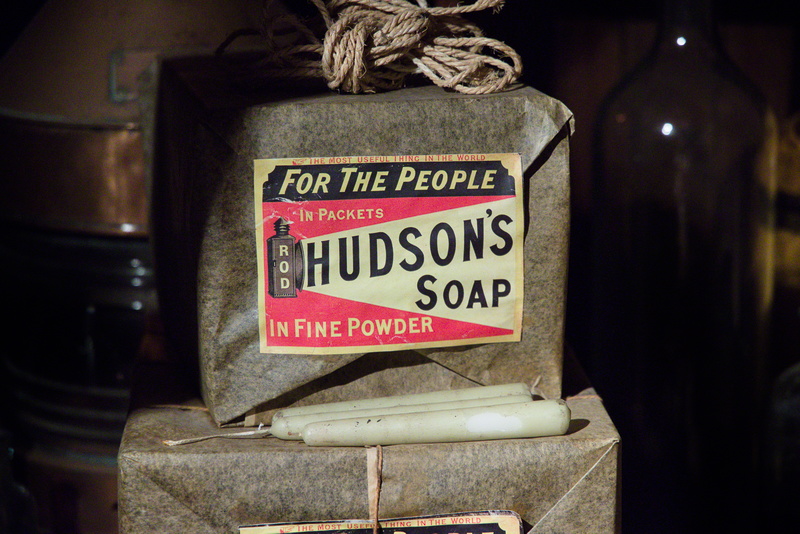
Have you ever wondered what the most useful thing in the world is? Well, you need to look closely, but that is exactly what Hudson's Soap tells us it is. Now if you, like me, have never heard of Hudson's Soap, you might be surprised to learn that Robert Spear Hudson was the inventor of soap powder! In 1837 he started grinding solid blocks of soap into flakes, which had previously been a laborious task for the housewife (unless you were posh, of course, in which case it would be a servant's job). The business thrived, eventually employing a thousand workers and exporting as far as Australia and New Zealand. It's quite remarkable how much a quick Internet search will reveal, and good quality original enamel signs and advertisments fetch quite a bit of money now.
I am not aware of any of this as I take the picture, of course. The context is a recreation of a fishing town's general store.
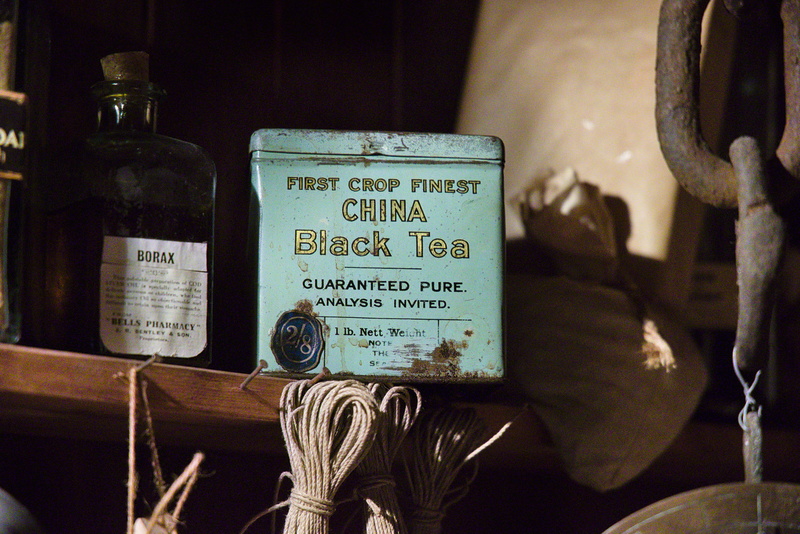
We're on a roll: let's have some more groceries! I'm not sure quite who is being invited to analyse the tea here, and by what method they would analyze it.
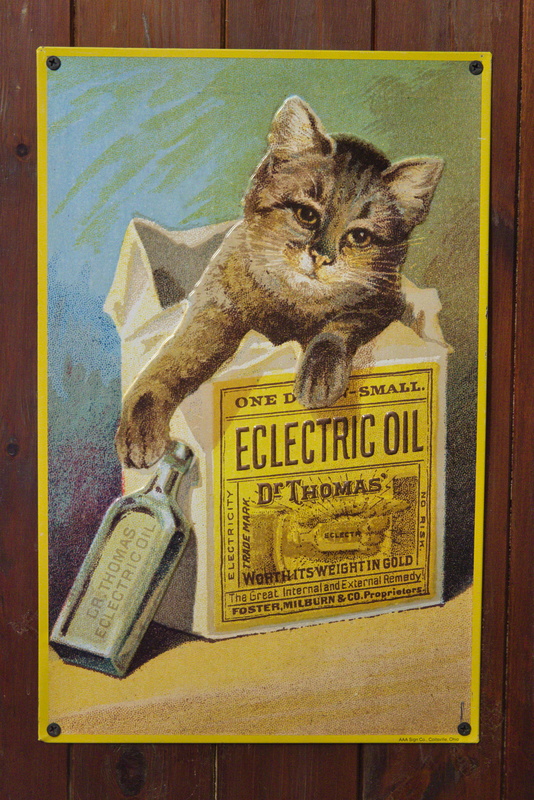
And one more: "Dr Thomas' Eclectric Oil". Well quite. This is slighly out of place, as it was manufactured in Canada and sold there and the US as a patent medicine to cure every imaginable ill ("also good for horses and cattle"). Again, masses of online information if you look.
I have no idea what the cat is doing, other than climbing in the box and knocking over the bottle as cats do.
Anyway, let's have a bit more of a look around town...

And here we have a most curious thing: a church tower without a church. St Peter's was badly damaged by fire in 1958, and all but the clock tower demolished shortly after. The former grounds are now esentially a small municipal garden space.
Back on our bikes, and home to Kirk Michael.

Careful not to run over the chickens on the driveway.
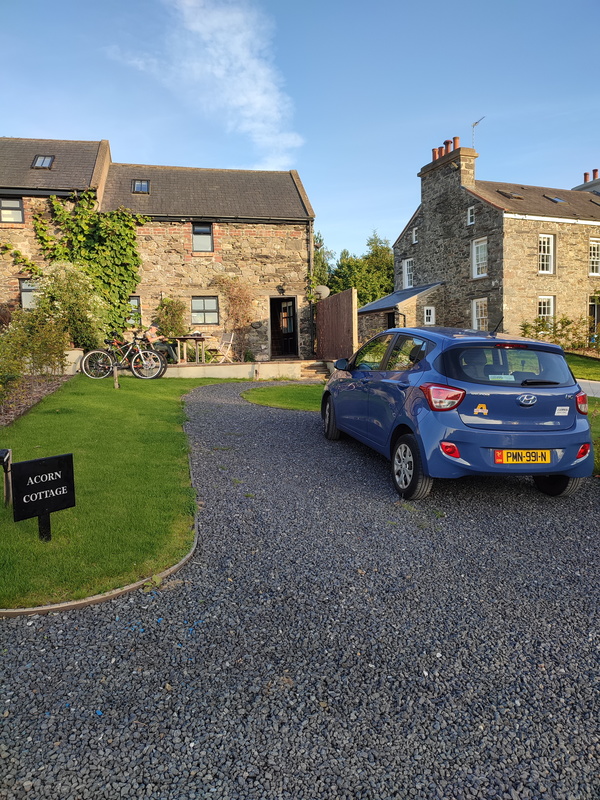
Our cottage with a bit more surrounding context. Although we're not particularly isolated, it's very quiet and peaceful even so.

We'll study our maps with some wine and nibbles in the sunshine.

Then to the kitchen with me!
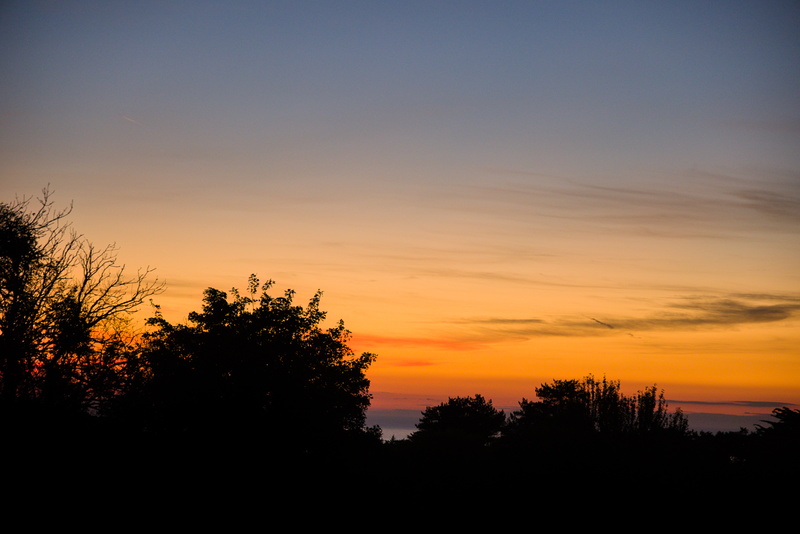
And a fine sunset. It's quite noticeable that night falls later here than in the South.
⬅ previous ⬆intro next ➡